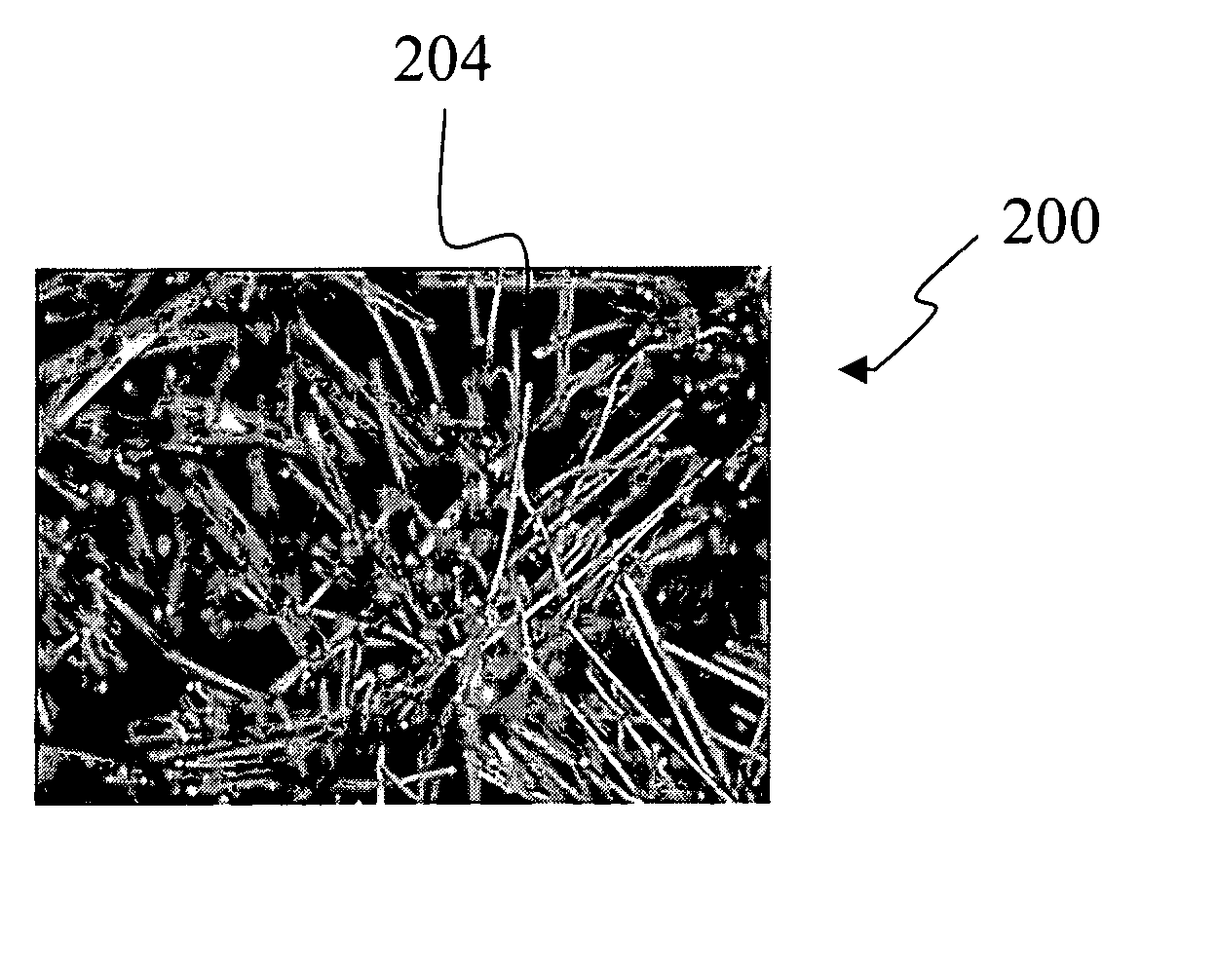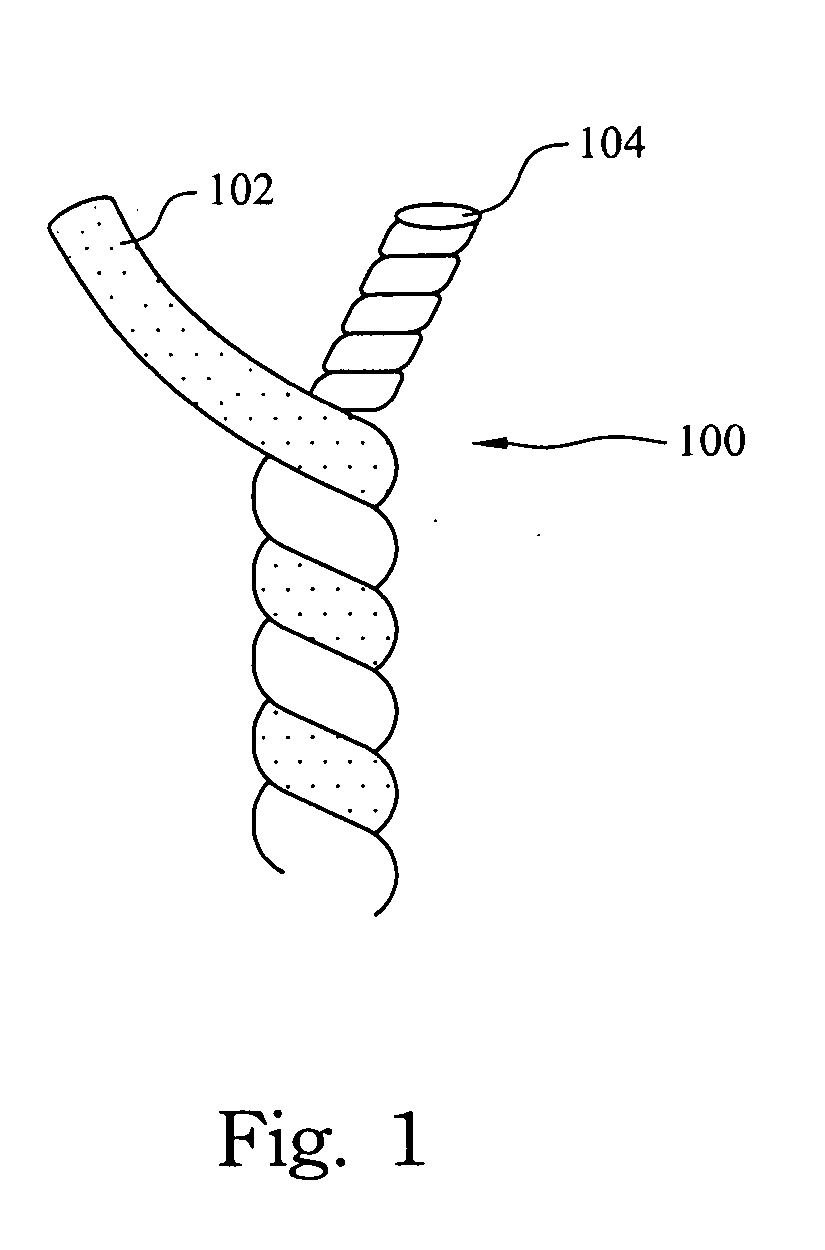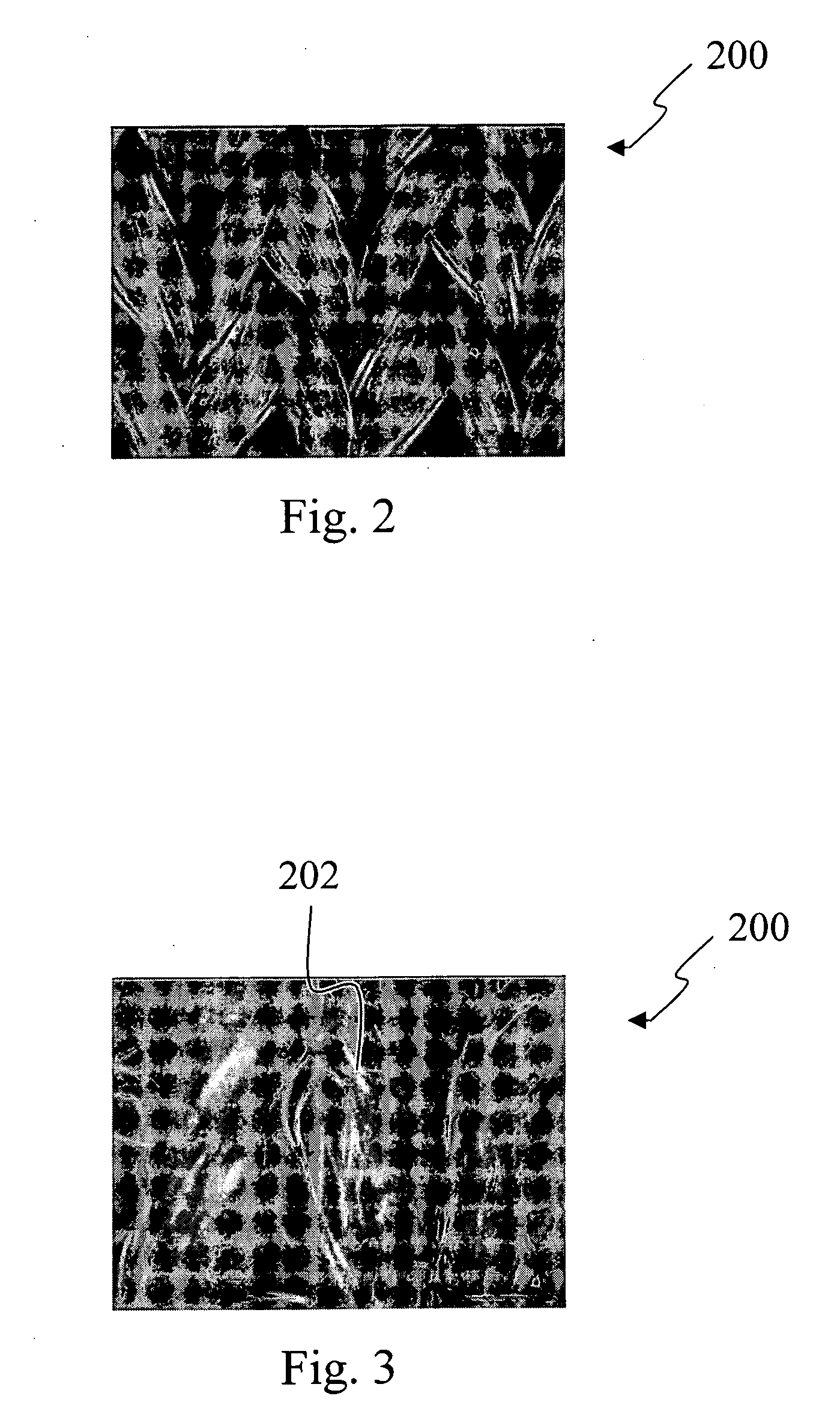Method of fabricating a conductive textile
a conductive textile and textile technology, applied in the field of functional textiles, can solve the problems of reducing the softness of textiles and reducing the electrical conductivity, and achieve the effect of increasing the conductivity of conductive textiles and reducing the resistance of conductive textiles
- Summary
- Abstract
- Description
- Claims
- Application Information
AI Technical Summary
Benefits of technology
Problems solved by technology
Method used
Image
Examples
embodiment 1
[0023] According to a preferred embodiment of the present invention, a scraping method is performed on the surface of the textile to form the erect-interlaced fibers. FIG. 2 is an electron microscope image showing a knitting fabric according to one embodiment of the present invention. First, according to a preferred embodiment of the present invention, a knitting fabric 200 is used as a textile. The surface of the knitting fabric 200 is scraped back and forth to form nap 202 (erect-interlaced fibers) on the surface of the knitting fabric 200, as shown in FIG. 3. The roughness degree of the surface of the knitting fabric 200 is according to demands. Alternatively, a fleece process can be performed after forming the nap 202 on the surface of the knitting fabric 200 according to demands to entwine the nap 202 on the surface of the knitting fabric 200 and increase the structural stability of the nap 202.
[0024] Then, a vacuum coating process is performed at a preferred pressure between ...
embodiment 2
[0027] According to another preferred embodiment of the present invention, a flocking method is performed on the surface of the textile to form the erect-interlaced fibers. FIG. 4 is an electron microscope image showing flocking fibers formed on the textile according to another embodiment of the present invention. First, adhesive is coated on a textile 200 to form an adhesive layer. Short fibers 204 are flocked on the adhesive layer of the surface of the textile 200 to form erect-interlaced fibers. The short fibers 204 are preferably less than 3 mm long and the diameter of the short fibers 204 is preferably less than 0.01 mm. The short fibers 204 are 1 mm long according to the embodiment of the present invention.
[0028] Next, a vacuum coating process is performed at a preferred pressure between 10−2 torr and 10−3 torr for about 20 minutes to sputter silver to form a silver layer on the surface of the erect-interlaced fibers and the textile. Consequently, a conductive textile is form...
PUM
| Property | Measurement | Unit |
|---|---|---|
| pressure | aaaaa | aaaaa |
| pressure | aaaaa | aaaaa |
| thickness | aaaaa | aaaaa |
Abstract
Description
Claims
Application Information
 Login to View More
Login to View More - R&D
- Intellectual Property
- Life Sciences
- Materials
- Tech Scout
- Unparalleled Data Quality
- Higher Quality Content
- 60% Fewer Hallucinations
Browse by: Latest US Patents, China's latest patents, Technical Efficacy Thesaurus, Application Domain, Technology Topic, Popular Technical Reports.
© 2025 PatSnap. All rights reserved.Legal|Privacy policy|Modern Slavery Act Transparency Statement|Sitemap|About US| Contact US: help@patsnap.com



